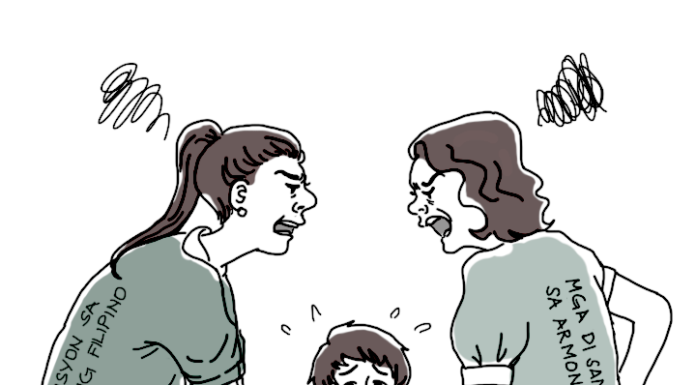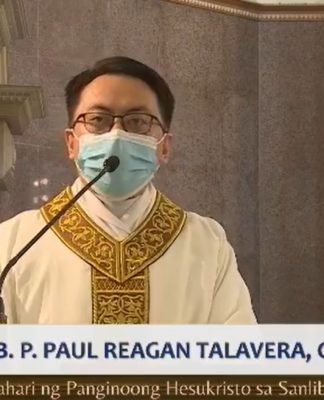QUITTING smoking is still the better option.
Despite the accessibility of costly medical treatments, medical doctors reiterated the importance of early diagnosis and prevention to battle cancer during the Annual Cancer Conference hosted by the UST Hospital-Benavides Cancer Institute (USTH-BCI) from Nov. 7 to 9.
Now on its sixth year, the conference highlighted the status of lung cancer in the Philippines as well as modern ways to prevent the spread of the disease with the theme “WE CAN!—Cancer Awareness Network.”
According to the American Cancer Society, cancer develops due to uncontrollable growth of rapidly-dividing abnormal cells in the body, which may further result in malignancy or the formation of tumors that could potentially lead to death.
Two recognized Philippine cancer registries, Department of Health-Rizal Cancer Registry and the Philippine Cancer Society-Manila Registry, recently reported cases of lung cancer as the second leading cancer site—the body organ where cancer cells originate.
However, 2010 statistics from the World Health Organization (WHO)-International Agency for Research on Cancer shows that the cancer in the body’s vital organ is the top cause of cancer deaths in the country, said Dr. Maria Rica Lumague, a consultant at the Rizal Medical Center.
Common causes of lung cancer include exposure to tobacco smoke, secondhand smoke, and exposure to radiation and chemicals, such as asbestos and benzene.
The 2010 Philippine Cancer Facts and Estimates, a study co-authored by Lumague, stated that “early detection and treatment [of lung cancer] is still difficult to achieve, even in high income countries, which causes survival rates to go down.”
Based on statistics from the Philippine Cancer Facts and Estimates, lung cancer is already approaching a “one is to one incidence/mortality ratio”—for every one reported cancer case, a reported death follows.
“Many lung cancer patients do not survive a year after its diagnosis,” Lumague said.
Dropping the cigarette
According to a WHO Report on Tobacco, lung cancer in the United States is the leading cause of cancer mortalities, with an estimated 221,000 new cases in 2011, and has the highest statistical correlation with smoking.
“Tobacco use is responsible for the 22 percent of deaths due to cancer worldwide,” said Dr. Rosalinda Pulido, resident oncologist of the San Juan De Dios Hospital.
Of the 7,000 chemicals in tobacco smoke, 260 are known to cause physical harm and 69 of these harmful chemicals—such as benzene, beryllium, cadmium, chromium, and nickel among others—are known to directly cause cancer, Pulido said in her presentation.
Data from WHO also showed that around one-third or 47.6 percent of the Philippine population are smokers and 38.3 percent of them smoke daily.
In addition, one Filipino smoker consumes an average of 1,070 cigarettes per year compared with other countries in Asia, with a ratio of one smoker in every two in males and one in every ten females, the report said.
Dr. Maria Ronila Santos of the UST Center for Respiratory Medicine added that there has been a 33-percent increase in the number of Filipino smokers since 1995.
“The Philippines appears to be very late in implementation of legislation for regulation of tobacco use,” she said in her presentation’s abstract. “Although measures are being implemented like the passage of the Sin Tax Reform [bill], there is still a need for the proper implementation and enforcement of these reforms and establishment of a national tobacco control program.”
Manila Doctor’s Hospital cardiologist Dr. Anthony Leachon echoed Santos by pointing out that the “cheap price of the tobacco” aggravated smoking in the country.
In addition, Santos warned that not only active tobacco smokers are at risk of having lung cancer because people around a smoker are affected by passive or second-hand smoke.
Early and accurate diagnosis
With the advancements in molecular science and modern technology today, physicians can now determine cell and tissue abnormalities, as well as cancerous tumors, with higher accuracy.
“The only way to cure lung cancer is to get it at an early stage and perform a surgery depending on the size of the tumor,” said Dr. Emmanuel Dela Fuente, a pathologist from the Makati Medical Center.
Frequently-used technique in detecting cancer is called a biopsy, which is a medical procedure used to determine the presence of cancer by collecting and examining cell and tissue samples under the microscope or modern imaging techniques.
“Because of new [imaging] technologies, we begin to detect [as early as] stage two cancers unlike before when doctors determine cancers which are already in stage three or four,” he added.
Dela Fuente identified fine needle aspiration biopsy (FNAB) and core biopsy (CB) as two reliable biopsy methods for lung cancer evaluation and diagnosis because of high sensitivity, specificity, and accuracy of the results that these techniques can provide.
In FNAB, a very thin and hollow needle attached to a syringe is used to withdraw the mass of tissue samples which are suspected to have cell abnormalities, while CB is performed in a similar way but with the use of larger hollow needles and guided by ultrasound or x-ray imaging to check if the needle is in the right place.
Tissue samples obtained from biopsies are examined by pathologists to classify the cancer according to its histological subtype, or the classification of carcinomas (tumor tissues) based on tissue morphology.
Dela Fuente added that identifying the lung cancer subtype is necessary because an oncologist will base the therapies to be given on the patient from biopsy results.
‘Greater benefit, fewer risks’
Dr. Ernest Hawk, vice president for Cancer Prevention and Population Sciences of the MD Anderson Cancer Center of the University of Texas, believes that cancer prevention is still the most effective way to combat the disease as it poses greater benefits and fewer risks compared to other means of treating cancer.
“I believe in prevention so strongly because there’s so much more benefit than risk [in it] than most of the interventions we have,” he said. “Early cancer diagnosis through screening and early intervention grants the opportunity for greater advantage and fewer hazards. In most types of cancer, the earlier you identify and remove it, the better the result will be.”
However, preventive treatments against cancer do not totally eradicate the negative effects of such treatment, but the damages the treatment may inflict are of a lower degree.
“In prevention, we face the same sort of struggle—the potential for harm as well as benefit, but the harm tends to be less severe,” Hawk said.
The implementation of therapeutic treatments varies according to the needs of the individual and a kind of treatment should be taken into consideration.
“Typically, there are things that may increase discomfort. Every intervention, regardless of whether it is preventive or therapeutic, has the potential to cause harm as well as benefit,” Hawk said.
Surgically removing cysts or other cancer-causing agents is the most helpful method to prevent cancer from developing further.
Hawk emphasized that additional therapies are conducted and medicines are given on top of surgical intervention to further enhance the condition of the patient and to decrease the risk of recurrence.
“A lot of medicines available over the last 50 years that we have identified can pre-dominate rapidly-dividing cells, which cancer represents one form of,” Hawk said. “Probably, more than 50 agents are now available to try to help improve or extend the life of individual with established cancer.” Altir Christian D. Bonganay, Giuliani Renz G. Paas, and Cez Mariela Teresa G. Verzosa













